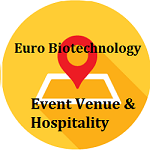
Biography
Biography: Mark JC Nuijten
Abstract
Registration of a medicinal product by EMA or FDA used to be the main determinant for the future sales forecast of the product and would justify a higher valuation of the share of the company, especially for a biotech company with only a limited number of products. Contrary, new emerging requirements for reimbursement authorities, payers and drug policy changes are increasingly going to determine the actual future sales and the actual post-launch costs. The current most important criteria for coverage decisions are effectiveness, cost-effectiveness and budgetary impact, which are taken into consideration to make a value for money decision. As the future financial performance of a pharmaceutical company is directly related to the free cash flow of a new drug, an appropriate assessment of the potential sales forecast of a portfolio of forthcoming new drugs is an important predictor of the economic value of a pharmaceutical company. Today, such an assessment should include the estimated effects of the new emerging requirements for reimbursement authorities, payers and the effects of other pharma policy changes, as pay-for-performance based financial agreements.
Objective: This presentation aims to provide a strategic value scan for biotechnology products at the early onset of the development program considering the emerging hurdles for market access. The application of the early phase scan will be based on a hypothetical new innovative drug in breast cancer.
Methods: The outcomes of the strategic value scan are determined by the key decision criteria: efficacy and safety, cost-effectiveness, budget impact and additional criteria may be included depending on the disease area. The input of the strategic scan is based on a sales forecast model, a cost-effectiveness model, and a pricing model, which are interacted and executed simultaneously. The strategic value scan will provide guidance on the position of the new product in the treatment pattern for each scenario and the expected comparators in each position. The cost-effectiveness model and pricing model will provide upper limits for the pricing potential for each scenario and the expected comparators in each position. These outcomes can be linked with a discounted cash flow model to optimize the economic value of the biotechnology company taken into considerations the hurdles for reimbursement and market access. The value scan includes various scenarios (e.g. negative, base case and optimistic) for the expected clinical profile of the new product and the positioning of the new product in the treatment pattern (e.g. 1-line, 2-line, 3-line treatment). It is important to predict the incremental benefit of the new product versus the relevant expected comparators at each possible position. Changes in design of the forthcoming clinical trial or positioning of the new product may increase the economic value of the company. For example, health economic data (effectiveness and resource utilisation) may be collected alongside the forthcoming clinical trial, which may be used as input for the health economic models.
Conclusion: We present a novel approach for the early phase valuation of biotechnology products from a broader perspective by bridging concepts from health economics, market access, pricing and the economics of business economic valuation

